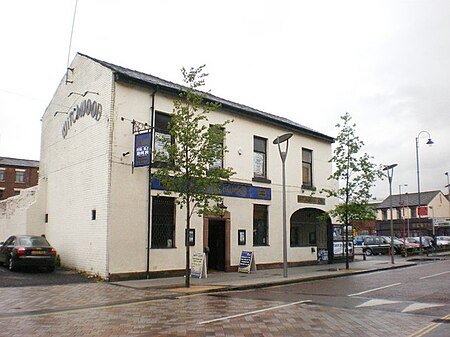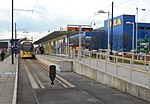The Witchwood

The Witchwood is a pub and live music venue in Ashton-under-Lyne, Greater Manchester, England. Located in Ashton's town centre, The Witchwood has been a hub for live indie and rock music since the 1960s, and features on North West England's pub music circuit. Previous performers at The Witchwood include Oasis, Badly Drawn Boy, The Coral, Snow Patrol, The Seahorses, James, Ash, The fall, Lostprophets, Muse, Opeth, The Damned, Sean Ryder, Glenn Tilbrook, the Hamsters and The Ordinary Boys; as well as popular local bands, including Perm, This Is Bracewell, Rock 'n' Roll outfit Bad Habits, double act Stuart Clarke & Shaun Pickles and Shadowlands. In 2004, Tameside Metropolitan Borough Council served a compulsory purchase order on The Witchwood, as plans for the regeneration of the surrounding area required the building to be demolished. After a campaign to save the venue, supported by local musicians and businesses, and live music fans from across the country, Ask Developments agreed that The Witchwood would stay, on condition that "the exterior would be re-rendered and new windows put in". The campaign to save The Witchwood was led by Tom Hingley and supported by musicians such as Bert Jansch, the Fall, and The Chameleons.
Excerpt from the Wikipedia article The Witchwood (License: CC BY-SA 3.0, Authors, Images).The Witchwood
Old Street, Tameside Hurst
Geographical coordinates (GPS) Address Nearby Places Show on map
Geographical coordinates (GPS)
| Latitude | Longitude |
|---|---|
| N 53.486666666667 ° | E -2.0986111111111 ° |
Address
Old Street
Old Street
OL6 7SQ Tameside, Hurst
England, United Kingdom
Open on Google Maps









